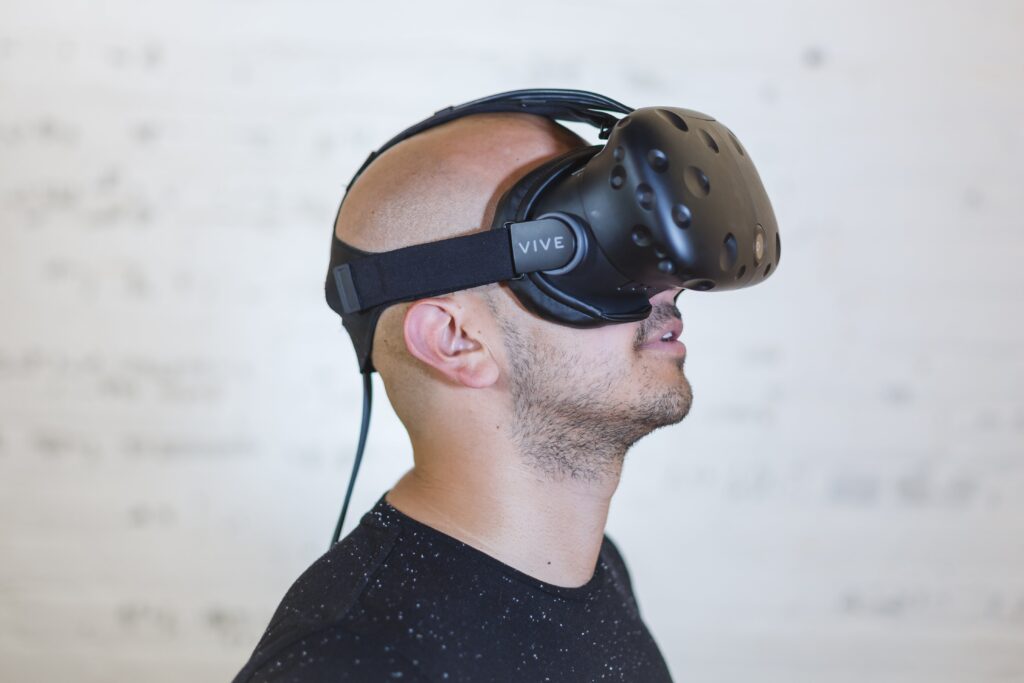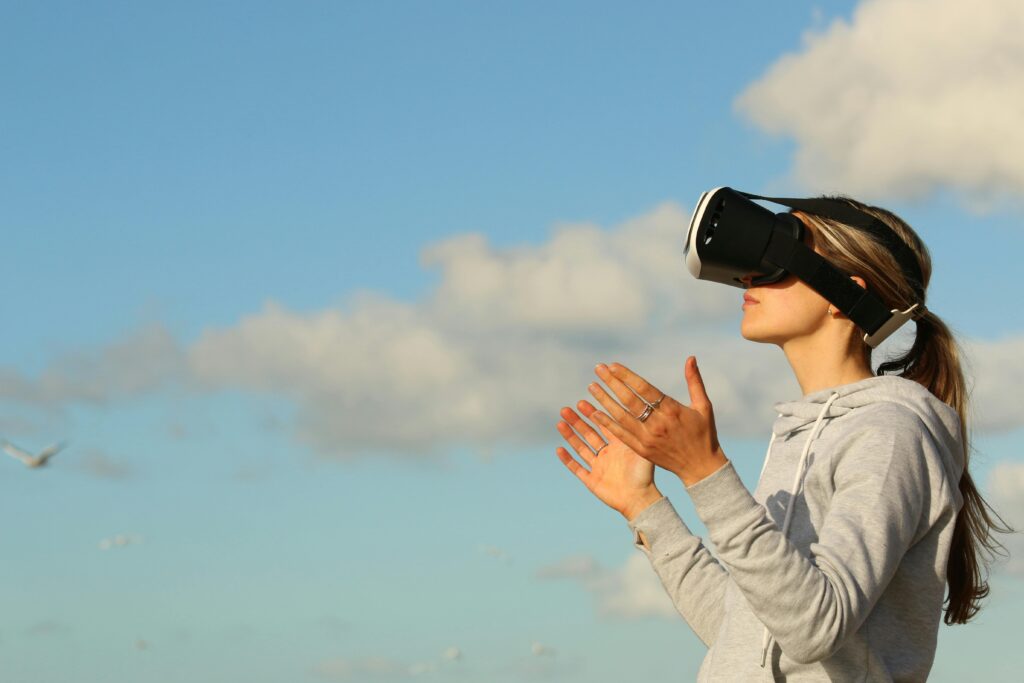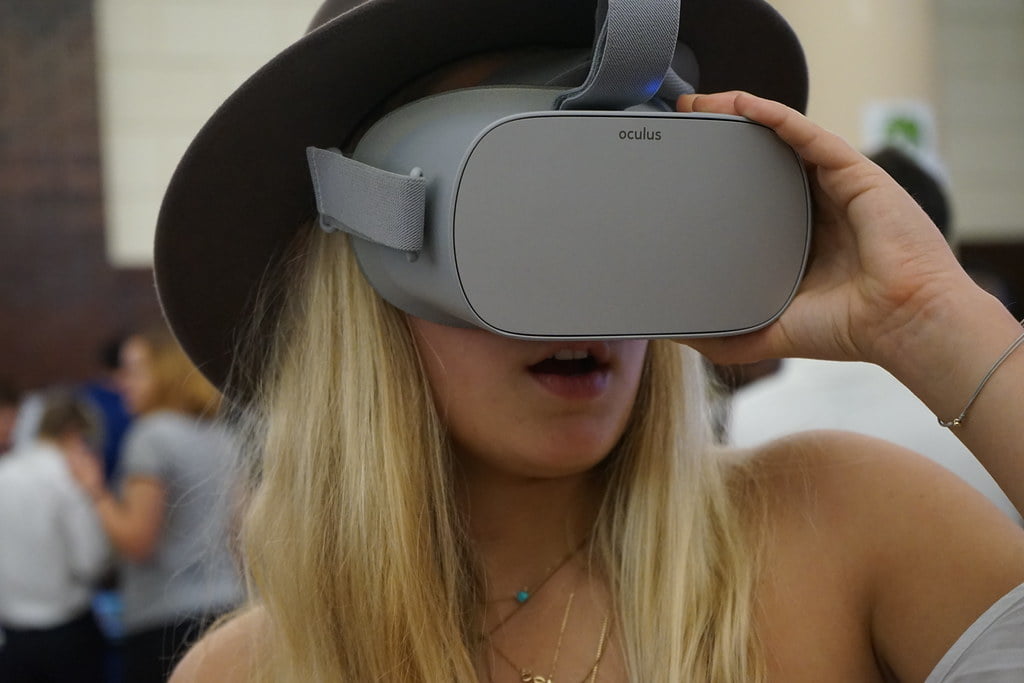Which Countries Utilize VR in Education?

Which Countries Utilize VR in Education: The potential of virtual reality (VR) to transform classrooms around the world is undeniable. Virtual reality (VR) technology allows for immersive encounters that go beyond physical distance, creating interactive and engaging learning spaces for students. Let’s see how other countries are integrating virtual reality into their school systems.
United States:

- The popularity of virtual reality as a useful learning tool has skyrocketed in the US. Virtual reality (VR) is being used by teachers to improve the learning experience in a variety of settings, from elementary schools to college lecture halls. The use of virtual reality (VR) in history classes is a prime example; Students can virtually visit places such as ancient civilizations or Civil War battlefields, allowing them to experience the past in a way that is impossible with traditional textbooks.
- Additionally, virtual reality (VR) applications have significantly enhanced STEM (science, technology, engineering, and mathematics) education. In a safe and regulated setting, students can explore scientific concepts through virtual experiments. For example, physics students can watch complex processes in action, while chemistry students can conduct experiments without worrying about accidents or leaks.
- Medical students use virtual reality (VR) simulations to practice surgical techniques and patient diagnosis, which is just one example of how VR is improving health care education. Before entering clinical settings, students can build critical thinking abilities and self-assurance through this practical methodology.
- Virtual reality (VR) isn’t just used in the classroom; It is also used in special education to help students with different needs succeed. To promote accessibility and inclusion, virtual environments can be adjusted to suit different learning styles and abilities.
- Virtual Reality (VR) is used not only in classrooms but also in corporate training programs across various sectors. Virtual reality (VR) simulations help businesses prepare their employees for real-life situations, such as dealing with customers or following emergency procedures.
- When it comes to using virtual reality (VR) in the classroom, the US is far ahead of the curve. We are harnessing the potential of VR to engage students, improve learning outcomes and train them to meet the challenges of the modern workplace. The impact of virtual reality on future American classrooms will only increase as new technologies develop.
United Kingdom:

- The growing popularity of the use of VR in the classroom is a reflection of the UK’s dedication to educational innovation. Virtual reality (VR) is rapidly becoming an integral part of classroom instruction in the United Kingdom, both to complement more traditional approaches and to provide more engaging, immersive learning environments for students.
- In the United Kingdom, virtual reality has found a prominent home in the study of culture and history. Virtual tours of museums, archaeological sites, and other historical places allow students to experience history in a way that reading about it in a textbook cannot. Learning becomes more interesting and lasting when students actively participate in gaining better knowledge of the past.
- Additionally, there has been an explosion in the use of virtual reality (VR) in STEM (science, technology, engineering and mathematics) classrooms in UK schools. Overcoming barriers such as equipment availability or safety concerns, students can conduct experiments and study scientific topics in virtual environments using virtual science laboratories. An essential component of STEM education, this hands-on approach sparks interest and encourages experimentation.
- Virtual reality (VR) is being used in special education in the UK, showing their dedication to inclusive education. The ability to personalize virtual settings allows for inclusion of students with disabilities, allowing them to engage in interactive learning and enhance their skills.
- Virtual reality (VR) is also used in UK universities and business schools. Students can gain real-world experience in a controlled setting, simulating real-world job interviews and other working events.
- Innovation in virtual reality education is being fueled by the thriving tech industry in the United Kingdom. Tech startups and established tech corporations are working together to create course-specific educational content and platforms. When teachers and technology developers work together, virtual reality (VR) technology can better support educational goals and improve learning outcomes.
- Finally, the UK is looking to virtual reality (VR) as a viable means to revolutionize education by providing students with engaging and immersive experiences across a wide range of academic areas. The impact of virtual reality on education in the United Kingdom is only going to increase as the technology develops further, which will impact the way people learn in the years to come.
China:
- A reflection of China’s dedication to innovation and technological advancement, virtual reality (VR) is rapidly becoming a game-changer in the country’s educational system. Virtual reality (VR) is increasingly becoming a popular tool among Chinese educators and policy makers as a means to enhance students’ learning experiences and fundamentally change traditional educational practices.
- The field of cultural and historical studies is an area where virtual reality has been widely used in Chinese education. The Great Wall and the Forbidden City are two ancient sites in China that students can visit virtually to learn more about the country’s history and culture. This method not only encourages students to think critically about the past, but it also helps them feel more patriotic.
- Virtual reality has also been a boon for STEM (science, technology, engineering and mathematics) programs in China’s classrooms. By using virtual scientific laboratories, students are able to perform simulations and experiments that would be financially or logistically prohibitive in more traditional laboratories. Students are prepared for jobs in STEM-related occupations through this hands-on learning approach, which promotes critical thinking and problem-solving abilities.
- One way China is showing its dedication to inclusive education is by using virtual reality to help students with different learning styles. Through the adaptation of virtual environments to meet different learning styles and abilities, it is possible to ensure that every student has access to a quality education.
- VR is being used more and more in China’s higher education institutions and vocational training programs. Online learning opportunities, such as virtual internships and simulated industry settings, help students get ahead in today’s competitive job market.
- China’s rapidly growing tech sector is seeing significant investment from both established companies and new startups in virtual reality (VR) educational content and platforms. By working together, teachers and tech companies can make virtual reality (VR) a tool that helps students learn and achieve China’s educational goals.
- To summarize, virtual reality (VR) is being used by China to revolutionize education by providing students with engaging and immersive learning experiences that go far beyond what is traditionally offered. The growing influence of virtual reality in China’s classrooms will determine how the country approaches education and embraces new ideas in the years to come.
Table of Contents
Japan:
- Japan is known for its innovative and technologically advanced educational system, which is increasingly incorporating virtual reality. Virtual reality (VR) is expanding its role in Japanese classrooms, providing students with interactive experiences that pique their interest and encourage them to think critically. The educational landscape in Japan is being enhanced by virtual reality (VR) initiatives ranging from historical reenactments to scientific investigations.
South Korea:
- Virtual reality (VR) is gaining popularity in the classroom in South Korea, a reflection of the tech-savvy society prevalent there. To meet the needs of students with a wide range of learning styles, more and more schools are incorporating virtual reality (VR) into the classroom. South Korean students are being better prepared for the digital age through the use of virtual reality (VR) in a variety of educational contexts, including language study and cultural immersion.
Australia:

- Virtual reality (VR) is being used by teachers in Australia to revolutionize classrooms. Virtual reality (VR) is increasingly becoming an integral part of school curricula as a means of enhancing traditional teaching methods and engaging students in more immersive learning experiences. The use of virtual reality (VR) is expanding educational opportunities in Australia, whether students are learning about the Great Barrier Reef or analyzing digital creatures.
Conclusion:
Which Countries Utilize VR in Education: People all over the world are starting to use virtual reality (VR) in the classroom as they see how much of a game-changer it can be. Educators from the United States to Australia are creating immersive and interactive learning environments that spark curiosity and improve understanding through the use of virtual reality technology. The future of education around the world is going to be shaped by virtual reality as the technology is getting better and better at its functions.

